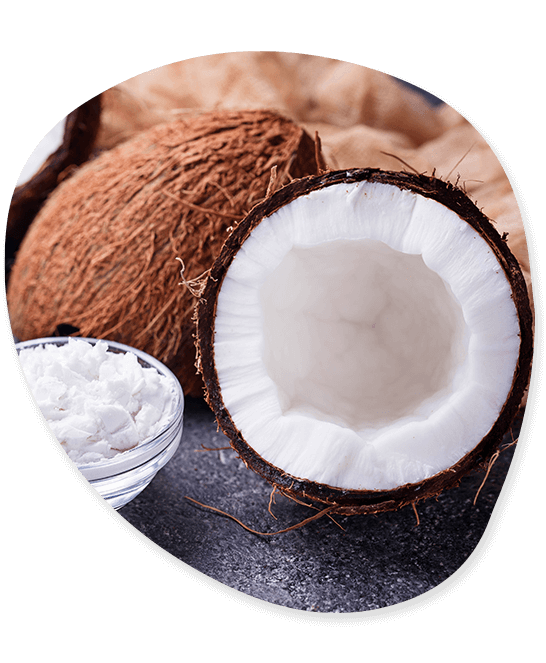Coconut
In India, coconut is particularly well-liked. One of the world leaders in the production of coconuts is India. India produces over 21,500 million tonnes of coconuts annually. India exports a significant amount of coconut. Major coconut exporters include the states of Tamil Nadu, Kerala, Karnataka, and Andhra Pradesh. Due to the rising global demand for coconuts, India is now exporting more coconuts.

Pre-Shipment Inspection:
Standard Packing:
- We provide packaging in terms of 5, 10, 20, 25, 50 and 100kg also, as per the customers’ (country) requirement.
COCONUT VARIETIES WE EXPORT
Coconuts come in a number of kinds, including West Coast Tall, East Coast Tall, Chnadrakalpa, VPM-3, Aliyar Nagar, and others. Many different varieties of coconuts are exported from India to other nations.

WEST COAST TALL
For extensive cultivation, the West Coast Tall cultivar, commonly referred to as ordinary or common tall, is advised. This kind produces high-quality coconut juice that can also be fermented. In comparison to other types, the quantity of coconut juice produced is also good. It can be used to make soap and for food reasons.

EAST COAST TALL
It typically takes 6 to 8 years for an east coast tall to produce coconuts. Compared to the tall West Coast variety, the coconuts are lesser in size. Additionally advised for extensive coastal production is this cultivar. This type of coconut grows in Andhra Pradesh, Tamil Nadu, Bihar, Pondicherry, and other places.

CHANDRAKALPA OR LAKSHADWEEP ORDINARY (LCT)
The Chandrakalpa variety can endure moisture stress and thrives in all types of soil. In India, states like Kerala, Tamil Nadu, Karnataka, and others, you can find the Chandrakalpa kind.

PHILIPPINES ORDINARY (KERACHANDRA)
All types of soil are known to support the growth of the common cultivar in the Phillipines. This particular coconut takes about 5 years to bear fruit. There are typically 110 nuts produced on average per palm each year. This cultivar has about 66% oil content.

VPM – 3 (ANDAMAN ORDINARY)
The VPM-3 cultivar is unique in that it can withstand drought and is suited for both rainfed and irrigated environments. It contains a lot of copra and 70% oil. States like Orissa, Tamil Nadu, Kerala, the Andaman Islands, Andhra Pradesh, Bihar, and others have this kind.

ALIYAR NAGAR
In comparison to the VPM-3, West Coast Tall, and East Coast Tall, the Aliyar Nagar blooms one year earlier. Major coconut pests are believed to be tolerable for this type. It generates 126 nuts per palm year on average and contains 66.5% oil.

TIPTUR TALL
A well-known farmer from the state of Karnataka is the Tipur Tall. This variety’s gestation period lasts between 6 and 7 years. Around 86 nuts per palm are produced on average each year. Approximately 68% of it is oil.

KERA SAGARA (SEYCHELLES)
Popular in Kerala State is the cultivar known as Kera Sagara. It has an average output of 99 nuts per palm per year and a 68% oil content. It takes about six to seven years to forbear.

BENAVALI GREEN ROUND (PRATAP)
Pratap, often referred to the Benavali Green Pound, was published in 1985 by CPCRI. Each year, this variety produces about 110 nuts.

PHILIPPINES TALL (CHANDRATHARA)
The Chandrathara cultivar, commonly referred to as the Philippines Tall, was introduced in 1985. For this cultivar, the annual yield is about 110.

ASSAM TALL (KAMAROOPA)
The Assam Tall or Kamaroopa cultivar was introduced in 1985. The copra weighs about 189 pounds. For Assam Tall, a yield of 110 nuts per year is typical.

KALPADHENU
A type called Kalpadhenu thrives in places like Kerala, Andhra Pradesh, Tamil Nadu, the Andaman and Nicobar Islands, and other parts of India. There are about 22,794 nuts produced per hectare in Kalpadhenu.

KALPA PRATIBA
The states of Maharashtra, Kerala, and some parts of Andhra Pradesh and Tamil Nadu are where Kalpa Pratiba is most prevalent. 23,275 nuts per hectare are the approximate yield.

KALPA MITRA
Kalpa Mitra is a type that is commonly grown in West Bengal and Kerala. For the Kalpa Mitra cultivar, a yield of 80 nuts per year is normal. Approximately 58 months are needed for Kalpa Mitra to flower.

KERAKERALAM
This cultivar originated in Kerala. It contains about 68% oil. The gestation period for Kerakeralam is 6–7 years. Around 99 nuts per palm are produced annually on average by the Kerakeralam tree.
